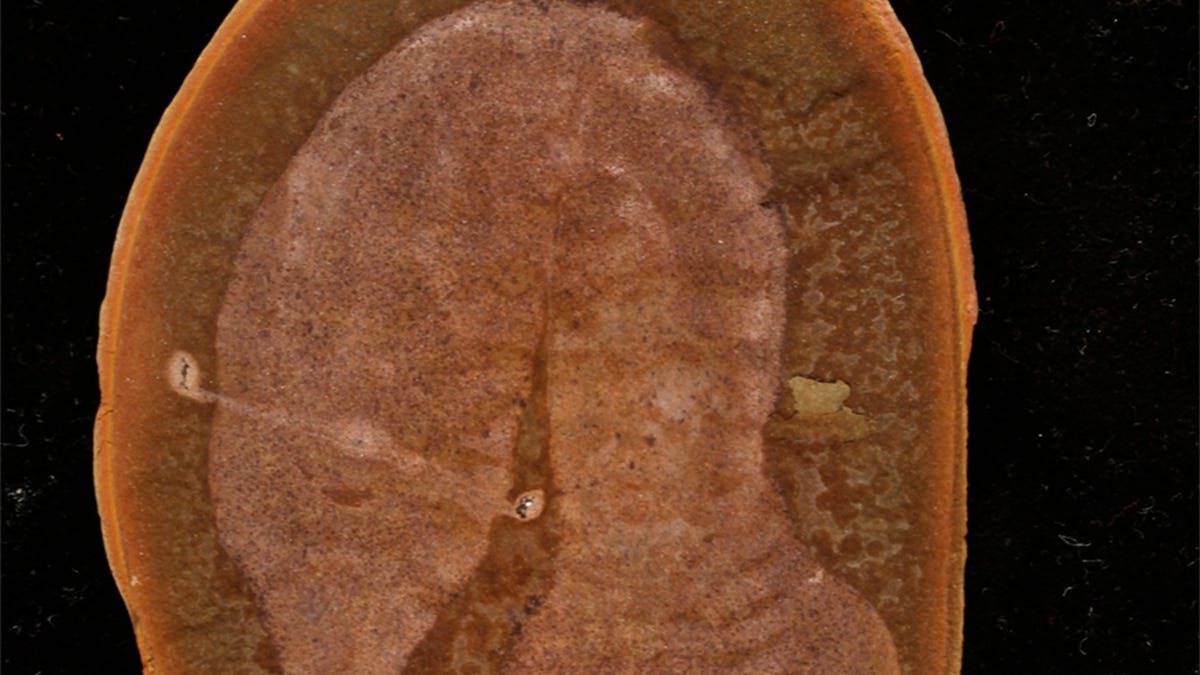The mystery of the Tully Monster, solved at last
A mysterious fossil has been baffling palaeontologists for decades. Now, they have determined what kind of animals Tullimonstrum gregarium were.
Since 1958, when amateur collector Frank Tully found a mysterious fossil sample, a bizarre creature has had palaeontologists scratching their heads. The Tully Monster, as it came to be known, or Tullimonstrum gregarium, was so named because scientists could not even determine to which phylum the creature belonged.
The ancient creature dates back to the Carboniferous Period in the late Paleozoic Era, restricted to the Mazon Creek fossil beds in Illinois some 307 million years ago. Although it's not quite as old as the 508 million-year-old pre-Cambrian Burgess Shale creatures, it's just as funny-lookin'. It has a soft, tube-shaped body that tapers to a long, thin snout with a toothy end, eyes that protrude outwards from either side of its mid-section on stalks, and a finned rear.
Scientists had thought it some sort of squishy invertebrate, like a sort of worm or slug. However, a team of researchers from The Field Museum of Natural History, Yale, Argonne National Laboratory, and the American Museum of Natural History have studied the creature in depth, and have revealed that that is not the case. Their paper has been published today in the journal Nature.
T. gregarium is, in fact, a vertebrate, a type of jawless fish similar to the lampreys of today.
This discovery would have been a lot more difficult without the magic of digitisation. Housed at the Field Museum of Natural History in Chicago is a large collection of T. gregarium fossils. It was these fossils, digitised, that the team used for their research, combing through and looking for rare samples and unusual characteristics.
"By digitizing our collections, taking photographs of our fossils and placing all of the data into a database, we made it easier for our researchers to search our collections and find specimens with new and sometimes rarely preserved evidence that may be critical for their research," said The Field Museum's Fossil Invertebrates Collections Manager Paul Mayer in a statement.
"The monsters are related to the jawless fishes that are still around today by a unique combination of traits, including primitive gills, rows of teeth, and traces of a notochord, the flexible rod-like structure along the back that's present in chordate animals -- including vertebrates like us."
A reconstruction showing what paleontologists think T. gregarium looked like.
If you've ever seen a lamprey, you'll probably agree that the "monster" moniker is well deserved. Those sucker mouths are fairly unpleasant to look at. The two don't look a great deal alike, though. The lamprey's snout doesn't taper, and its eyes are most certainly not on weird stalks. It does, however, have a finned tail, similar to the one T. gregarium sports.
The discovery highlights the ongoing need to study the strange fossils found in beds like the Burgess Shale and Mazon Creek. It's also a delight for the state of Illinois, which took T. gregarium as its official State Fossil in 1989.
"The Tully monster is a wonderful fossil that captures the imagination of every school kid," Mayer said.
"When I talk to school groups, I used to use the Tully monster as an example of a mystery that palaeontologists have been trying to solve ever since it was discovered. Now I'll have to change my talk and use it as an example that highlights the importance of how amateur palaeontologists and researchers from different backgrounds can work together using new technologies and museum collections to solve a mystery."


